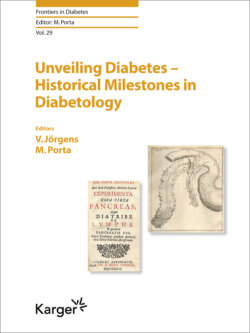Читать книгу Unveiling Diabetes - Historical Milestones in Diabetology - Группа авторов - Страница 63
На сайте Литреса книга снята с продажи.
Nicolai Paulescu: A Misquoted Discovery and Embarrassing Political Activities
ОглавлениеNicolai Paulescu (Fig. 7) was born in Bucharest in Romania on October 30, 1869 – the same year as Paul Langerhans published his thesis discovering the islets in the pancreas. Paulescu was the eldest of four children, one brother became a general in the Romanian Army. His parents were part of the very wealthy bourgeoisie in Bucharest and Nicolai received an exceptional education. He was fluent in ancient Greek and Latin and his French was perfect [20]. Romania’s intelligensia was closely related to France and therefore Paulescu took up his medical studies in Paris in the autumn of 1888 – the same year Oskar Minkowski moved from Königsberg to Strasbourg. In 1891 he passed, with honors, the exam to become intern at the Hôtel Dieu hospital, a renowned center for diabetes research and care since the time of Apollinaire Bouchardat. His thesis on the spleen was considered to be excellent and he graduated at the Sorbonne in Biochemistry and Physiology. Paulescu graduated in 1897 as an MD and worked in Paris at the Hôpital Notre-Dame du Perpétuel-Secours headed by Prof. Etienne Lanceraux, one of the most famous French physicians at this time. Both became friends and together published a textbook of medicine with nearly 4,000 pages [21]. Lanceraux believed in the pancreatic origin of diabetes. In several publications, starting in 1877, he argued for the existence of two forms of diabetes, one of them being pancreatic diabetes [22, 23]. Paulescu’s research activities covered many areas resulting in numerous publications. His greatest success was the development of a new method to remove the pituitary gland in animals by an intracranial subtemporal route. Harvey Cushing described Paulescu’s results as “by far the most important contribution to the subject” and Cushing used Paulescu’s method in neurosurgery which made him famous [20]. Motivated by Prof. Albert Dastre, Paulescu commenced work with the objective of isolating and studying the “active substance of the internal secretion of the pancreas,” but there are no publications about these experiments [24]. Dastre held the Chair of General Physiology at the Sorbonne, following Claude Bernard and Paul Bert.
In 1900, Paulescu returned to Romania where he had been appointed assistant professor of physiology. In 1904 he became Head of the Physiology Department of the Bucharest University Medical School. However, he needed the contact to clinical medicine and therefore served, in addition, as consulting physician at the St. Vincent de Paul Hospital.
In Bucharest Paulescu continued his research on the pituitary gland. However, inspired by the publications of Zülzer in 1908, he chose to return to diabetes research. In 1916, he observed that an extract he had produced from pancreas tissue improved metabolic control in pancreatectomized dogs. Alas, bad luck and political upheaval would intervene. In 1916 a new King was crowned in Romania and the country entered into the First World War. Despite the fact that the King originated from the Hohenzollern family, like the German Emperor, he joined the Entente and invaded the Austro-Hungarian Empire on August 27, 1916. It turned into a total disaster, Austria, substantially supported by the German army, petrified the Romanian army and on December 16, 1916 the city of Bucharest was conquered. There was no way for Paulescu to continue any research until the armistice of 1918. The land area of Romania subsequently doubled, but the vast majority of the new inhabitants were not Romanians. In particular, the annexed Moldova and Bessarabia had an important Jewish population. Romanian politics then entered a dark period of racism and antisemitism.
